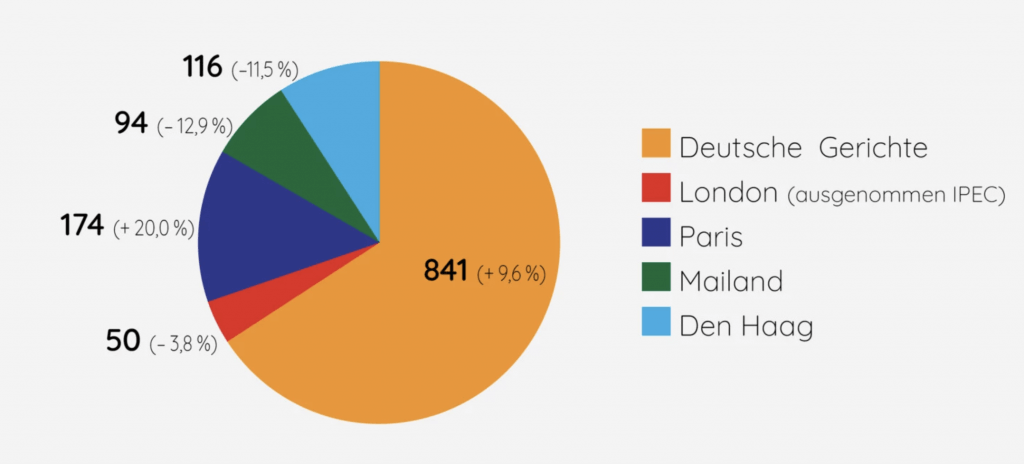Introduction
The primary aim of a defensive patent strategy is to prevent the patents of other companies from being infringed.
There are various reasons to decide in favour of a more passive attitude with regard to the handling of intellectual property:
On the one hand, many entrepreneurs fear a loss of image if they proceed too aggressively - especially if they fail in the last instance. On the other hand, despite a great deal of standardisation, the patent system legal uncertainty, as well as the risk of "backfire" from competing companies.
The number of patent lawsuits has risen in recent years, particularly in France and Germany.

So how can you avoid expensive and time-consuming patent lawsuits without jeopardising your own market position? In the following, we will discuss a few methods.
Method 1 - More patents
The scope of protection of individual patents is generally limited. This is because nowadays they often differ only slightly from the already known prior art. This is also referred to as a low level of invention. This circumstance means that companies apply for more patents, which cumulatively increase the scope of protection.
Large patent portfolios have an intimidating effect and make it more difficult for young companies to enter the market. In addition, they provide a certain amount of bargaining power in licence or arbitration proceedings.
The disadvantages of a large patent portfolio are obvious: both the development and maintenance are associated with considerable costs, especially for internationally operating companies. There is also a risk that the quality of patent applications will suffer due to the quantity. Against this background, it makes sense to look at more resource-efficient methods...
Method 2 - Alternative technologies
Another common component of defensive patent strategies is the so-called "design arround". Thereby bypasses (eng. design arround), alternative technical solutions could be used to infringe the patents of competing companies. The situation would therefore be comparable to an in-house development, except that here you are orientating yourself to the solution of other companies.
Instead of striving for in-house development, technical solutions that have already been published can also be realised. This is because only a fraction of the technical solutions disclosed in patents are actually in force.

It therefore makes sense to check whether technical solutions have been published in the patent databases and what their legal status is before embarking on new R&D projects.
Method 3 - Licences
Licensing is a widespread practice and a component - not only - of defensive patent strategies.
The chances of finding a licensor are influenced by various factors. With a lot of luck, you will find a relevant patent with a so-called declaration of willingness to licence. In this case, the applicant waives his freedom of disposition and design, so that anyone can licence the disclosed technology on fair terms (determined by the patent office if necessary).
In general, licence negotiations can be influenced in various ways, for example by potential licensees declaring their waiver of a "design arround" as credibly as possible.
The following types of contracts are the most common:
- non-exclusive / single licence
- exclusive / exclusive licence
- Sole licence
- limited (exclusive) licence
In fact Licence agreements are freely negotiable, so that many variations or alternatives to the agreements listed above exist. A large patent portfolio is an advantage in licence negotiations.
Method 4 - Defensive publication
Under certain circumstances, it can make sense to publish new technologies. As a result, they cannot be patented either by your own company or by competing companies. This is because already known solutions do not fulfil the basic requirement for patentability.
The manner of publication is important here. Particularly in the case of internationally active companies, the publication should be verifiable beyond doubt and comprehensible for international courts or patent examiners.
In addition, the publications should have a sufficient scope (or level of detail). In Germany, for example, it would be conceivable to register a utility model for technical solutions. This strategy makes particular sense for solutions with low commercial potential.
These 4 methods make up a significant part of defensive patent strategies. A combination of these methods with different weightings is often the most sensible. However, a combination of offensive and defensive strategies is also conceivable, as shown by the example of Tech start-ups to see.
Further information
¹ Source: juve.de






